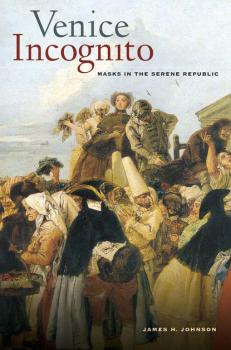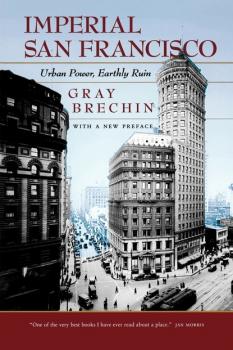Историческая литература
Различные книги в жанре Историческая литератураLos Angeles in the 1930s
Federal Writers Project of the Works Progress Administration
Los Angeles in the 1930s returns to print an invaluable document of Depression-era Los Angeles, illuminating a pivotal moment in L.A.’s history, when writers like Raymond Chandler, Nathanael West, and F. Scott Fitzgerald were creating the images and associations—and the mystique—for which the City of Angels is still known. Many books in one, Los Angeles in the 1930s is both a genial guide and an addictively readable history, revisiting the Spanish colonial period, the Mexican period, the brief California Republic, and finally American sovereignty. It is also a compact coffee table book of dazzling monochrome photography. These whose haunting visions suggest the city we know today and illuminate the booms and busts that marked L.A.’s past and continue to shape its future.
Venice Incognito
"The entire town is disguised," declared a French tourist of eighteenth-century Venice. And, indeed, maskers of all ranks—nobles, clergy, imposters, seducers, con men—could be found mixing at every level of Venetian society. Even a pious nun donned a mask and male attire for her liaison with the libertine Casanova. In <i>Venice Incognito</i>, James H. Johnson offers a spirited analysis of masking in this carnival-loving city. He draws on a wealth of material to explore the world view of maskers, both during and outside of carnival, and reconstructs their logic: covering the face in public was a uniquely Venetian response to one of the most rigid class hierarchies in European history. This vivid account goes beyond common views that masking was about forgetting the past and minding the muse of pleasure to offer fresh insight into the historical construction of identity.
San Francisco in the 1930s
Federal Writers Project of the Works Progress Administration
"San Francisco has no single landmark by which the world may identify it," according to <i>San Francisco in the 1930s</i>, originally published in 1940. This would surely come as a surprise to the millions who know and love the Golden Gate Bridge or recognize the Transamerica Building’s pyramid. This invaluable Depression-era guide to San Francisco relates the city’s history from the vantage point of the 1930s, describing its culture and highlighting the important tourist attractions of the time. David Kipen’s lively introduction revisits the city’s literary heritage—from Bret Harte to Kenneth Rexroth, Jade Snow Wong, and Allen Ginsberg—as well as its most famous landmarks and historic buildings. This rich and evocative volume, resonant with portraits of neighborhoods and districts, allows us a unique opportunity to travel back in time and savor the City by the Bay as it used to be.
Land of the Unconquerable
Reaching beyond sensational headlines, <i>Land of the Unconquerable</i> at last offers a three-dimensional portrait of Afghan women. In a series of wide-ranging, deeply reflective essays, accomplished scholars, humanitarian workers, politicians, and journalists—most with extended experience inside Afghanistan—examine the realities of life for women in both urban and rural settings. They address topics including food security, sex work, health, marriage, education, poetry, politics, prisoners, and community development. Eschewing stereotypes about the burqa, the contributors focus instead on women’s empowerment and agency, and their struggles for peace and justice in the face of a brutal ongoing war. A fuller picture of Afghanistan’s women past and present emerges, leading to social policy suggestions and pragmatic solutions for a peaceful future.
Year of the Locust
Year of the Locust captures in page-turning detail the end of the Ottoman world and a pivotal moment in Palestinian history. In the diaries of Ihsan Hasan al-Turjman (1893–1917), the first ordinary recruit to describe World War I from the Arab side, we follow the misadventures of an Ottoman soldier stationed in Jerusalem. There he occupied himself by dreaming about his future and using family connections to avoid being sent to the Suez. His diaries draw a unique picture of daily life in the besieged city, bringing into sharp focus its communitarian alleys and obliterated neighborhoods, the ongoing political debates, and, most vividly, the voices from its streets—soldiers, peddlers, prostitutes, and vagabonds. Salim Tamari’s indispensable introduction places the diary in its local, regional, and imperial contexts while deftly revising conventional wisdom on the disintegration of the Ottoman Empire.
In Search of Lost Meaning
In this new collection of essays, Adam Michnik—one of Europe’s leading dissidents—traces the post-cold-war transformation of Eastern Europe. He writes again in opposition, this time to post-communist elites and European Union bureaucrats. Composed of history, memoir, and political critique, <i>In Search of Lost Meaning</i> shines a spotlight on the changes in Poland and the Eastern Bloc in the post-1989 years. Michnik asks what mistakes were made and what we can learn from climactic events in Poland’s past, in its literature, and the histories of Central and Eastern Europe. He calls attention to pivotal moments in which central figures like Lech Walesa and political movements like Solidarity came into being, how these movements attempted to uproot the past, and how subsequent events have ultimately challenged Poland’s enduring ethical legacy of morality and liberalism. Reflecting on the most recent efforts to grapple with Poland’s Jewish history and residual guilt, this profoundly important book throws light not only on recent events, but also on the thinking of one of their most important protagonists.
I've Got the Light of Freedom
This momentous work offers a groundbreaking history of the early civil rights movement in the South with new material that situates the book in the context of subsequent movement literature.
Imperial San Francisco, With a New Preface
First published in 1999, this celebrated history of San Francisco traces the exploitation of both local and distant regions by prominent families—the Hearsts, de Youngs, Spreckelses, and others—who gained power through mining, ranching, water and energy, transportation, real estate, weapons, and the mass media. The story uncovered by Gray Brechin is one of greed and ambition on an epic scale. Brechin arrives at a new way of understanding urban history as he traces the connections between environment, economy, and technology and discovers links that led, ultimately, to the creation of the atomic bomb and the nuclear arms race. In a new preface, Brechin considers the vulnerability of cities in the post-9/11 twenty-first century.
Ancient Egyptian Literature, Volume III
First published in 1973 – and followed by Volume II in 1976 and Volume III in 1980 – this anthology has assumed classic status in the field of Egyptology and portrays the remarkable evolution of the literary forms of one of the world’s earliest civilizations. <br /><br />Volume I outlines the early and gradual evolution of Egyptian literary genres, including biographical and historical inscriptions carved on stone, the various classes of literary works written with pen on papyrus, and the mortuary literature that focuses on life after death. Introduced with a new foreword by Antonio Loprieno.<br /><br />Volume II shows the culmination of these literary genres within the single period known as the New Kingdom (1550-1080 B.C.). With a new foreword by Hans-W. Fischer-Elfert.<br /><br />Volume III spans the last millennium of Pharaonic civilization, from the tenth century B.C. to the beginning of the Christian era. With a new foreword by Joseph G. Manning.
Ancient Egyptian Literature, Volume II
First published in 1973 – and followed by Volume II in 1976 and Volume III in 1980 – this anthology has assumed classic status in the field of Egyptology and portrays the remarkable evolution of the literary forms of one of the world’s earliest civilizations. <br /><br />Volume I outlines the early and gradual evolution of Egyptian literary genres, including biographical and historical inscriptions carved on stone, the various classes of literary works written with pen on papyrus, and the mortuary literature that focuses on life after death. Introduced with a new foreword by Antonio Loprieno.<br /><br />Volume II shows the culmination of these literary genres within the single period known as the New Kingdom (1550-1080 B.C.). With a new foreword by Hans-W. Fischer-Elfert.<br /><br />Volume III spans the last millennium of Pharaonic civilization, from the tenth century B.C. to the beginning of the Christian era. With a new foreword by Joseph G. Manning.









